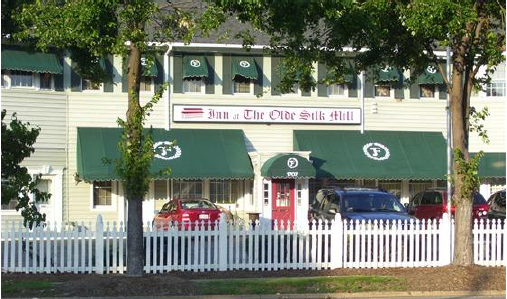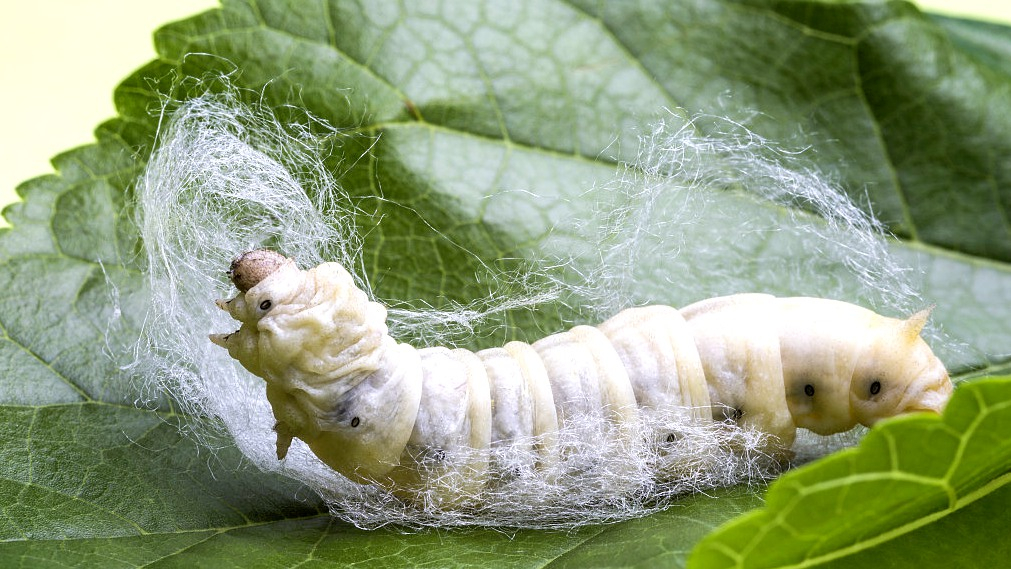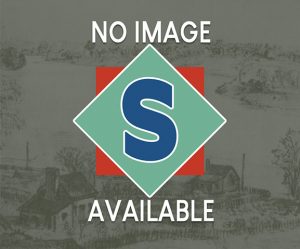Silk Industry
Colonial Time
In Europe, silk was a prized commodity during the seventeenth-century. France had a thriving industry and King Charles II of England wanted to have one in his own colonies.
In the late 1630’s, experimentation with silkworm farming began in Virginia. It was encouraged by two Royal Governors, Sir William Berkeley and Edward Digges. Virginia wanted to produce something for the mother country that she could not produce in great quantities for herself. Also, the colony did not want its entire economy to be based just on tobacco.
In 1665, the Assembly of Virginia passed a law requiring each planter in the colony to plant ten mulberry trees for every hundred acres owned. This was done because silk worms fed upon their leaves.
In the mid 1700s, Thomas Ludwell Lee (1730-1798 – brother of Francis Lightfoot Lee and Richard Henry Lee, signers of the Declaration of Independence) attempted to produce silk on his Stafford property, Berry Hill. Supposedly, it received its name from the fact that he planted his entire property with mulberry trees. Other Stafford property owners also attempted to produce silk. For example, William Fitzhugh of Chatham was very interested in experimental farming including silk production.
Unfortunately, the silkworms did not flourish in Virginia, and despite years of dedicated effort, silk production never progressed beyond the experimental stage. The Potomac-Accakeek Creek area, however, still has quite a few mulberry trees, descendants of the Lee plantings.
The Potomac Silk Farm
A short distance east of Brooke on Brooke Road (Route 608) was the Potomac Silk Farm tract that by the mid-nineteenth century included the old Potomac Church site. This property seems to have been part of a 1,600-acre patent to William Horton (c.1625-after 1688) and William Heabeard (1678-c.1721) dating from Feb. 9, 1663. An elongated tract of land, it straddled Potomac Creek with the lower part being in the White Oak area of Stafford and the upper part just east of what we know as Brooke. That part located on the north side of the creek has an interesting history that has been largely forgotten.
Just prior to his death, James Hore (died 1807) acquired 666 2/3 acres of the Horton/Heabeard patent, his parcel being located on the north side of Potomac Creek. The Hore family was long associated with Stafford County, James being the son of Elias Hore (1719-1782) of Stafford. James married Frances Nelson who, upon her husband’s death, received 249 acres as her one-third dower interest in his real estate. (Typically, a widow’s dower interest in her husband’s real estate included their dwelling.) Other heirs briefly retained an undivided ownership of the remaining 498 acres.
Around 1811, Frances Hore conveyed her 249 acres to Archibald Rowley, Jr. Shortly thereafter, Rowley and the Hore heirs conveyed both tracts, roughly estimated as containing about 700 acres, to Dr. Thomas Fitzhugh Knox (1772-1835) of Fredericksburg. A margin notation in the 1813 land tax records states that the property was “Rather broken [hilly] & bounded by P. V. Daniel, Philip Alexander, Potomac Run, Alexander Hay, and John M. Daniel.” Knox sold part of the property, retaining 391 acres. At his death in 1835, the parcel passed to his son, Thomas F. Knox, Jr. (1807-1890).
In an effort to expand beyond the Virginia colony’s growing dependence on tobacco, as early as 1620 Virginia authorities were attempting to encourage the production of silk. Modest attempts at silk production continued throughout much of the seventeenth century, though with limited success. The problem seems not to have been with the hatching, feeding, and raising of the silk worms, but with the workers’ ability to “reel” or unwind the 3,000-foot-long silk thread that made up each cocoon. That critical part of the manufacturing process remained an impediment for another 200 years.
The 1830s was a decade of frantic industrial development in Virginia, which included a renewed interest in silk. In March 1836, the Virginia General Assembly granted Layton Y. Atkins (died 1866) and Thomas F. Knox permission to incorporate the Potomac Silk & Agricultural Company “for culture of silk and other agricultural products in Virginia.” The charter was valid for thirty years from the date of incorporation. In addition to Atkins, officers of this venture were John Moncure (1793-1876) president; Thomas F. Knox, Jr. treasurer and secretary; William A. Jackson (1806-1876), Henry R. Robey (1810- 1876); and William Allen (c.1785-1866). This joint stock company commenced operations with $5,000 in capital “and liberty to extend it to $50,000.” The directors purchased Knox’s 400 acres on the north side of Brooke Road and by 1837 had planted 2,000 Chinese mulberry trees. The company developed its facilities and by January 1839 had “a large cocoonery, that will accommodate one or two millions of worms, and seventeen acres of mulberry orchard.” That same year, Layton Atkins noted that 5,000 pounds of mulberry leaves produced 25 pounds of silk. Layton was a prolific writer of pamphlets and seems to have been rather passionate about agricultural pursuits. A newspaper article reporting on activities at the 1840 Fredericksburg Agricultural Fair states, “The Stafford Silk Company, under the management of Mr. Layton Y. Atkins, deserve the thanks of the Agricultural Society for the display of reeled Silk, and also for the exhibition of the process of reeling – and they would recommend to those engaged in the culture and manufacture of Silk, Reels made by the Union Manufacturing Company of Fredericksburg.”
In the 1830s and 1840s, various people became involved with silk worms and the Fredericksburg newspapers contain a number of advertisements for the sale of silkworm eggs and mulberry tree seedlings. One of the more prolific advertisers for eggs was Fredericksburg bookseller Robert Gray. These advertisements suggest there may have been numerous people then experimenting with silk, but little documentation of their efforts survives.
During this period, several silk mills, which wove silk threads into cloth, opened in the northern states. While this should have provided a market for Virginia silk the stumbling block in the nineteenth century remained what it had been two centuries before, the efficient and dependable reeling of the silk fibers from the cocoons. A few local attempts to build filatures, or reeling facilities, seem not to have been financially successful and Virginia’s brief venture into silk manufacturing died quietly.
Relatively little is known about the Potomac Silk Company because its business records were destroyed during the Civil War. It’s not known when operations ceased and certainly no business would have been conducted there during the war. By the close of war, some of the company’s principals had died and the charter expired in 1866. The following year, William Allen’s widow, Anne E. Allen, brought suit in the Stafford Circuit Court to force a sale of the Silk Farm in order to settle her husband’s estate. Mrs. Allen claimed that it wasn’t possible to divide the property equitably between the surviving shareholders and asked that it be sold and the proceeds divided between them. At that time, the shareholders were William Allen’s estate, Layton Y. Atkins’ estate, Reuben T. Thom, John J. Young, and Miss Ellen Lomax.
The court agreed with Mrs. Allen and in 1869 the Silk Farm was sold to Robert Shelton. He defaulted on his payments, but it was thirteen years before the property was again put on the market. In 1881, Armistead Dishman (c.1837-1903), a tenant on the tract, agreed to purchase it for $1,500. He paid $900 in cash and financed the remaining $600 for 397 acres. Mr. Dishman, formerly enslaved, had been born in Fauquier County and moved to Stafford in 1867. $900 was an astounding amount of cash in hand at that period. Married three times, he was the father of eleven children. He died of heart trouble. His obituary stated, “He tried to give his children a good common school education and train them how to work; that he was successful is shown by the fact that seven of his children have taught school in Stafford. He was a church member, honest and faithful and respected by both white and colored.” Another newspaper notice described him as “a highly respected colored citizen of Stafford.” One of his sons was John Norton Dishman (1863-1951) who ran the Brooke Pickle Factory for a number of years. After Armistead’s death, the property was divided between his heirs and at least part of it remained in the Dishman family until 1992.
20th Century
In the 20th century there was a silk factory in Fredericksburg in which many Staffordians worked. Emma Boutchyard was the daughter of John Wesley and Alberta Manning Boutchyard. She grew up on a farm near the present Falmouth Elementary School. Alberta was John Wesley’s third wife and the mother of six of his fifteen children. He died when Emma, the youngest, was just five years old. When Emma was ten only three of her mother’s six children were living at home. Mrs. Boutchyard decided that the son Alfred, would stay at home and take care of the farm while Emma and her twelve year old sister, Bessie, went to work in the newly opened silk factory across the river in Fredericksburg.
The factory was located on Princess Anne Street on the site of what is now The Colonial Inn. Going to work meant dropping out of school and walking approximately five and a half miles to work each day. The two girls were told to be at their work stations by eight in the morning. This meant leaving home before sun-up for the walk to work from November to March. The day ended at 5 p.m. and in the winter dark was approaching as the trek ended.
Emma was so small when she began working that her floor manager had to supply a wooden box for her to stand on in order to reach her machine. Her tiny hands were cut by the fast-moving thread as she guided it onto the spool and consequently her mother received a letter from the factory foreman. It stated that blood from Emma’s hand was spoiling some of the silk thread and she would be dismissed unless she reported to work wearing gloves.
Emma said her mother traced the pattern of her hands on an old cotton petticoat, cut out the patterns and stitched together the gloves that allowed Emma to continue working. She stayed at the silk factory for the next five years. She wasn’t sure, but she thinks she was paid five dollars a week. At age fifteen she left the silk factory to work in the new pants factory which was offering a beginning salary of eight dollars a week.
By Marion Brooks Robinson



